B&W CM Series surround speaker system Measurements
The B&W CM 4's sensitivity measured approximately 89dB/W/m. Its ported cabinet is tuned to approximately 32Hz, its minimum impedance is 3.9ohms at 32Hz, and I rate its nominal impedance at 6ohms. The impedance is highly capacitive at 4kHz, but its magnitude is 8ohms at that frequency. Overall, the CM 4 should be of average difficulty to drive.
All measurements were taken without grilles and without the optional bungs installed in the ports. Fig.1 (violet) shows the CM 4's pseudo-anechoic response at tweeter height, averaged over a 30° forward horizontal angle and combined with the nearfield responses of the woofers and port. The useful bass extends down to approximately 28Hz (-10dB relative to the output at 80Hz). The on-axis average is a little bumpy, but the average deviation across most of the range is about ±2dB. The major deviation is a peak at 10kHz, which could add a little fizz to the sound, as MF observed. Off-axis, a small suckout appears in the mid-treble between 2 and 5kHz, together with the usual rolloff at very high frequencies.
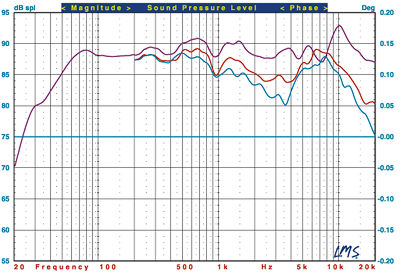
Fig.1
Fig.2 shows, again, the CM 4's averaged horizontal front response (violet), plus the vertical responses taken at +15° (red) and -15° (blue) relative to the tweeter. The responses are well-matched at and below tweeter height, but we don't recommend listening to the CM 4 significantly above the tweeter—something to keep in mind when auditioning it (sit down).
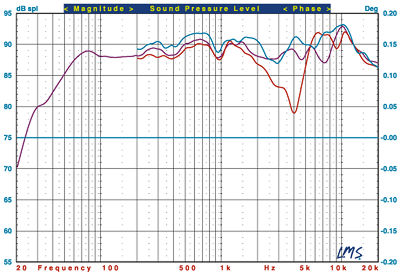
Fig.2
The center-channel CM C's cabinet is tuned to about 32Hz. I rate its nominal impedance at 6ohms; the minimum impedance was 3.4ohms at 32Hz. The speaker's sensitivity measured about 88dB/W/m. The CM C's impedance characteristics are similar to the CM 4's; it should be of average difficulty to drive.
The measured front horizontal response of the CM C, taken on the tweeter axis and averaged as described above for the CM 4, is shown in Fig.3 (violet). The useful bass extension is approximately 40Hz (-10dB relative to the output at 80Hz). The on-axis response is very smooth, but has a significant dip at about 4kHz. Because of the 21/2-way design, the horizontal off-axis performance is different depending on which side you place the measuring microphone. Fig.3 shows the response to the left. The dip at about 500Hz is likely due to interference effects between the two woofers, and the deep, narrow dip just above 4kHz is likely a crossover effect. Similar dips appear as you move right (Fig.4), but at different frequencies. The CM C's off-axis curves are not significantly better or worse than those of other similar woofer-tweeter-woofer horizontal designs. MF had no criticisms of its audible off-axis performance per se, but did note a bit of sibilance that might be the result of the speaker's rising high-frequency response, particularly relative to the mid-treble dip.
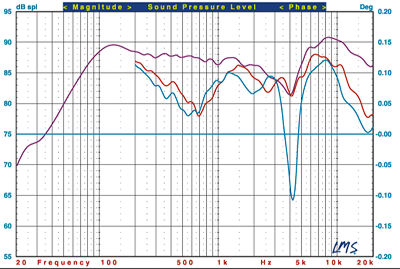
Fig.3
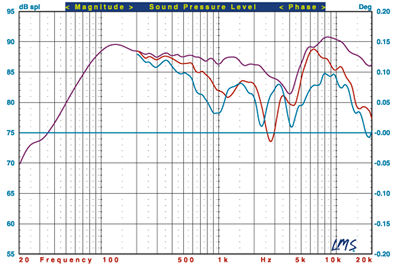
Fig.4
The CM C's ±15° vertical off-axis performance (Fig.5) is good—and, slightly off-axis, actually a little flatter than the on-axis performance. This suggests that the CM C might be used on top of a television without the user having to tilt it down to aim it directly at the listening position.—Thomas J. Norton
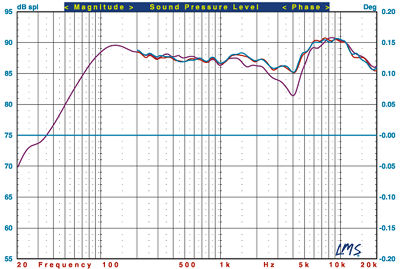
Fig.5





























































